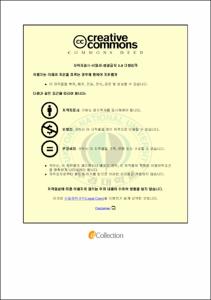유류오염 갯벌의 자연정화 향상 기술 개발에 관한 연구
- Abstract
- The usage of fossil fuel has increased due to the expansion of the industry that depends on it. The pollution caused by this also damaged the ecosystem of the land and the sea, which in return gained the attention from the modern industry. This study has accomplished to minimize a physical stress for natural purification of tidal flat polluted by oil and to develop a method to promote a natural defradation remediation mechanism. In this study we tried to remove TPHs in the tidal flat using organic processes by feeding microoranism with nutrients and supplying air.
The experiment has been carried out on 4 different treatment with 2 different TPHs concentrations, Case 1 (9,669∼16,489ppm) and Case 2 (18,160∼28,133ppm). First, the tidal flat where the comparison group and air had been processed. Second, tidal flat with nutrients, and the last, air and nutrients processed tidal flat. Treatment Ⅰ was a control system of TPHs contaminated tidal flat. Treatment Ⅱ was the system of TPHs contaminated tidal flat with air supply, Treatment Ⅲ was the system of TPHs contaminated with nutrient addition tidal flat. Treatment Ⅳ was the system of TPHs contaminated with nutrient and air supply tidal falt. We monitored the change of TPHs concentration in the 4 different system. we observed the change of microorganism activity and its numbers. As a result, treatment Ⅲ with nutrient addition of Case 1 and Case 2 showed the most effective TPHs removal, and treatment Ⅳ with air and nutrient also showed effective TPHs removal. Temporal changes of microbial activity and numbers were also monitored. It was observed from the results that the highest removal rates were monitored in treatments with nutrients addition in both cases 1 and 2. Then, the treatments with air and nutrient addition were higher TPHs removal than treatments with air only and the control system. Although the hydrocarbons with lower molecular weight (C19-C25) were mainly decomposed in the treatments with nutrient addition, hydrocarbons with higher molecular weight were dissipated in the treatments with air and nutrient addition in case 1. Microorganism activities increased until day 30 but decreased later. The higher microbial numbers were observed in treatment with air and nutrient addition in case 1 but in treatment with nutrients in case 2. However, the highest microbial activities were observed in treatment whit nutrient and those with air and nutrient addition in both cases 1 and 2.
From the results of this study, it could concluded that the addition of nutrient was most effective in the oil-polluted tidal falt and the addition of both air and nutrient was more effective to remove higher molecular weight TPHs.
- Issued Date
- 2010
- Awarded Date
- 2010. 2
- Type
- Dissertation
- Publisher
- 부경대학교
- Files in This Item:
-
-
Download
 유류오염 갯벌의 자연정화 향상 기술 개발에 관한 연구.pdf
기타 데이터 / 3.63 MB / Adobe PDF
유류오염 갯벌의 자연정화 향상 기술 개발에 관한 연구.pdf
기타 데이터 / 3.63 MB / Adobe PDF
-
Items in Repository are protected by copyright, with all rights reserved, unless otherwise indicated.